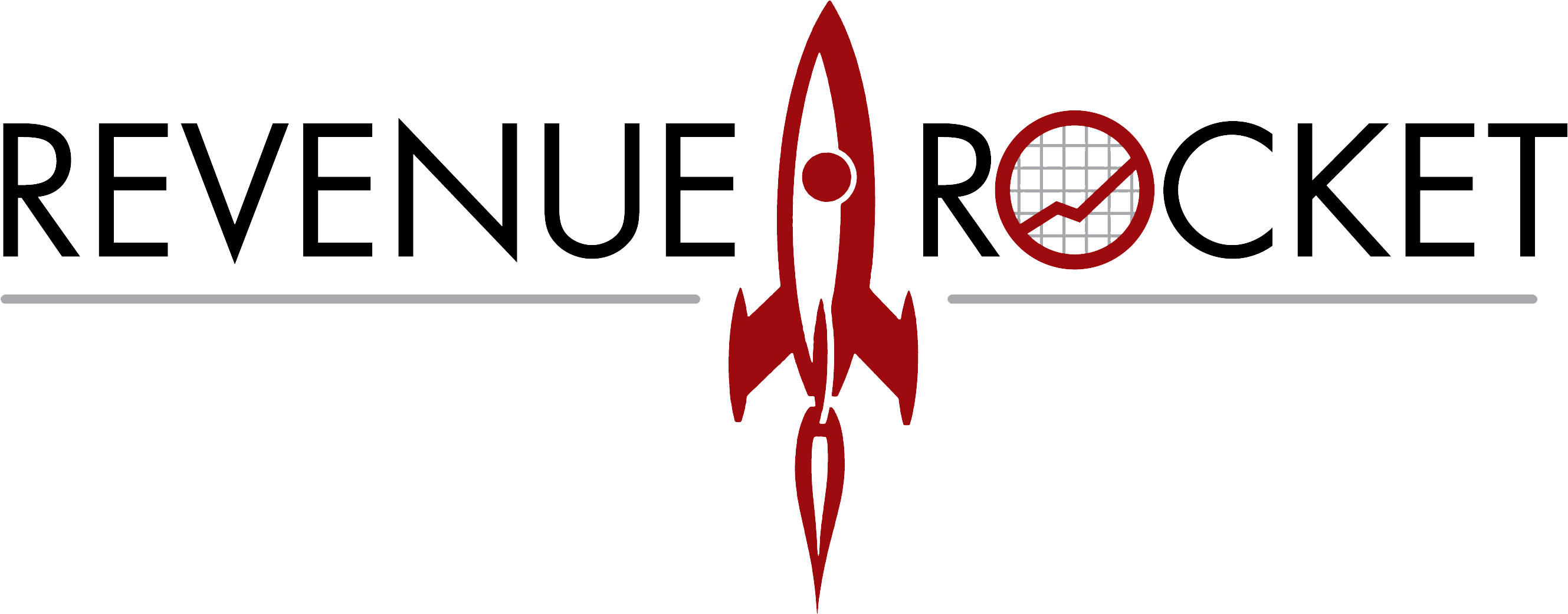01 Jan Inaugural Newsletter
A Revenue Rocket perspective by CEO Mike Harvath
In Welcome to the inaugural issue of the Revenue Rocket newsletter we’re calling Mach 2. You know Mach 1 as the speed of sound. Named after Austrian physicist Ernst Mach, it’s the ratio of a body’s speed relative to the speed of sound.
Mach 2 seemed appropriate because it fits nicely with Revenue Rocket for one, but more importantly it’s indicative of the speed with which we all must move to keep pace with the market. Metaphorically, if the industry is moving at Mach 1, then those who want to keep one step ahead have to be traveling at Mach 2.
For some perspective, just think about the speed in which the IT industry has reached $3 Trillion, which is what Gartner claims is the size of the industry. In GDP terms, the IT industry would rank third among the world’s economies, only behind the United States and Japan and slightly ahead of Germany. More astonishing than its absolute size is the speed at which innovation continues to fuel the industry. In most cases big equates to lumbering, lethargic, stodgy, yet it’s a constant source of amazement that an industry this size can move as fast, be as adaptable and be as innovative as we are. Just consider some of the technologies looking to have a breakout year, VOIP, unified communications, and SaaS, as well as those that continue to thrive, social networking, mobile and you quickly understand what was an idea yesterday is a technology today and a fabric of life tomorrow.
When I think of our industry’s velocity I’m reminded of the African proverb Thomas Friedman refers to in his book, The World is Flat. He uses this to illustrate the pace at which we all must move in his notion of a “flattened world”:
Every morning in Africa, a gazelle wakes up.
It knows it must run faster than the fastest lion or it will be killed.
Every morning a lion wakes up.
It knows it must outrun the slowest gazelle or it will starve to death.
It doesn’t matter whether you are a lion or a gazelle.
When the sun comes up, you better start running.
It’s also why many of you have heard us speak of managing through the Innovation Cycle. It’s that 4.5-year window made up of 3 distinct periods, each about 18 months long, which we know as growth, stagnation and inevitably, regrettably . . . decline. To prosper in this industry you have to keep yourself in a perpetual state of growth. Linger too long and in the blink of an eye you’ll find yourself a hapless gazelle in the clutches of a voracious lion.
To help get you off and running in the new year, click HERE for an article I wrote for the January issue of Redmond Channel Partner magazine. It was one of a series of briefs under the cover story, “A Partner To-Do List: 2008 Marching Orders.” It’s a lessons-learned piece covering five strategic steps for growth in a market that this year looks to have its own challenges.
If you have any thoughts, ideas or suggestions about what you would like to see in upcoming Mach 2 e-newsleters, please let us know by sending Mike an email or by calling 952-835-2333.
Our take on it all
As this is the season of football play-offs, we decided to borrow a football analogy to offer our take on the broad strategies you should consider for 2008. Simply put, the team that ultimately wins the Super Bowl does so because of excellence on offense, defense and special teams. So, too, for the IT services winners in 2008, to wit:
1. Offense
The question is how do you go to market in a tepid economy? With gusto is our recommendation. There is enough empirical evidence across many industries and over many years that prove that companies that take an aggressive approach to the market in slowing environments (and in recessionary climates, when it’s called recession marketing) come out ahead in the long term. The normal reaction when things get slow is to take a ‘batten down the hatches, boys’, ‘Let’s ride this baby out,’ and we’ll get back on track when the economy brightens up again approach. The fact that there is caution in the air among corporate CIOs and budgets are tighter simply means that IT investments will need to be sold rather than bought. Go on the offensive, invest in strategies that others will be too timid to undertake and come out ahead of the pack.
2. Defense
Look for competitors to be more aggressive in coming after your customers. In a flattened economy, companies look for share gains versus market growth and your competitors will be targeting your customers.
Your strategy ought to be to out-service your customers to the point that they rebuff these onslaughts.
3. Special Teams
Invest in those areas of the industry and those strategies that will give you a competitive edge. For example:
-
SaaS: The new mantra is virtualization and those in the know say that if you’re not here already you’re behind the curve. Right now it appears the SaaS market is capacity constrained, the market is there, so this is the time to jump ahead of this trend.
-
M&A: Be careful here. You can be easily swayed to jump prematurely in the M&A market because it’s hot. The key with any M&A is to avoid the temptation for a quick tactical hit. It’s certainly the time to be considering strategic M&A as companies are looking to prop up their offerings for the battles ahead.
-
Security: Maybe it’s time the security industry pooled its resources to make its case directly to the consuming public to get done what has to get done with regard to security. Right now, there is no unified, coordinated effort that either galvanizes that extent of the problem or offers a viable solution. It’s simply too easy for companies to put IT security on the back burner when they have tough decisions to make about limited IT resources. Security players will have to make their case more forcefully, collectively, to get their message heard and their solutions implemented.
A conversation with Greg Frankenfield
 This month we’re pleased to present a conversation with Greg Frankenfield, President and CEO of Magenic in Minneapolis. Founded in 1995, Magenic is a technical consulting firm focused exclusively on Microsoft technologies.
This month we’re pleased to present a conversation with Greg Frankenfield, President and CEO of Magenic in Minneapolis. Founded in 1995, Magenic is a technical consulting firm focused exclusively on Microsoft technologies.
How did you get started?
After getting an undergraduate degree in chemical engineering from the University of Minnesota, I enrolled in the university’s business school, getting an MBA in information systems. From there I held classic IT jobs at Proctor & Gamble and then management positions at General Mills, including R&D IT manager and the technical project manager for the installation of SAP. After a brief interlude at a small sales force automation company, where I met my partner Paul Fredman, the two of us chipped in $20,000 each and started Magenic in the basement of my house. Garage startups are a West Coast thing. In the Midwest, it’s the basement where entrepreneurs get started. From the beginning we set out to focus exclusively on Microsoft development and to make our company a great pace for people to work. Now, 13 years later, with 275 employees and revenues in the neighborhood of $43MM, we remain true to these principles.
Why have you done so well?
The things that I attribute to our longevity are:
First, you’ve got to be able to sell. You can’t depend on contacts, networks; you’ve got to be thinking about how well you sell your product or service. The number one thing technical people fail at is thinking the world will beat a path to their doorstep because they have a good idea. It just doesn’t work that way.
Second, you’ve got to find your niche. Whatever it is, whatever product or service you choose, you’ve got to focus on doing it well. Too many people want to taste every opportunity that comes in the door. The nice thing about sales is that it brings in opportunities. The negative part is that it drags in anything.
Third, never, never, never try to win on price. It’s a sucker’s game. Create value or get out of the business.
Fourth, overriding all this is to treat people with respect and expect them to be adults. I don’t like bureaucracy so I try to hire people that actually want to be responsible for their lives and their careers.
What’s your outlook for 2008?
The overall outlook for 2008 is interesting. Intellectually I believe it is going to be an average year. If I was to budget from a zero-based budget I would say a business my size could probably expect to comfortably grow 15%-20% year over year, which in the IT industry is about average because we’re a smaller firm. For us, I think we’ll beat that rate as we’re budgeting for a 25%-26% growth rate. We’re more bullish because we play exclusively within the Microsoft space and specifically within development and services. And Microsoft has been on a tear with new technologies and products that look to really bolster our position.
What’s your outlook for 2008?
The overall outlook for 2008 is interesting. Intellectually I believe it is going to be an average year. If I was to budget from a zero-based budget I would say a business my size could probably expect to comfortably grow 15%-20% year over year, which in the IT industry is about average because we’re a smaller firm. For us, I think we’ll beat that rate as we’re budgeting for a 25%-26% growth rate. We’re more bullish because we play exclusively within the Microsoft space and specifically within development and services. And Microsoft has been on a tear with new technologies and products that look to really bolster our position.
What are the blips on the horizon?
For the industry, I see four growth inhibitors. First, we’re resource constrained. We’ve been told for the last five years that everything is going offshore and guess what? It’s not. We can’t find enough people domestically to work and this is driving up demand prices as well as recruiting costs. Second, we’re skills constrained. There’s an avalanche of new technologies that just keep coming, and keeping our skill set current is absolutely critical. Third, is showing the value of differentiation. As an IT services firm, I’m concerned about we differentiate Magenic and how we continue to show value in the marketplace. Fourth, is delivery. Quite frankly, customers have a low expectation of quality because we meet customer after customer that’s already been burned twice before we get there.
What’s got you intrigued?
There’s an interesting trend that I’m following. In the 60’s, 70’s and 80’s and early 90’s innovation in the IT space came out of data centers. Businesses would order something up, refine it and when it got good enough, it made its way to consumers. Over the last 3 to 5 years innovation has shifted out of the data center and into consumer spaces first. And businesses are trying to figure out how to apply it. I use examples like Facebook and My Space. These are interesting collaborations in human social networking tools that have no analogy in business, yet businesses have many of the same problems. One of the challenges is looking at the consumer marketplace for IT and seeing what you can apply to your business.
You may email Greg or visit Magenic at www.magenic.com
Take Five Strategic Steps
As a growth-strategy consultancy that’s worked with more than 200 Microsoft partner companies, we offer the following general recommendations for 2008:
Fix what’s broken in sales. Focus first on a technology solutions set, second on geographical location and third on vertical or functional areas. Find the sweet spot where all three converge with the goal of becoming the No.1 or No. 2 provider in your market. Specialize, focus and dominate is the lesson here.
Fix new-account acquisitions. We recommend a combination of these three approaches:
One-to-many: Sell to multiple buyers at once by, for instance, conducting seminars at your local Microsoft office, seeking out speaking engagements and offering webinars and white papers.
One-to-one: Make appointments for yourself and your sales team with executive-level buyers of your services.
Many-to-one: Use your extensive business network to develop a formal referral program, targeting sources who can help you reach the right buyers.
Expand your service lines. Many partner firms focus too much on technology consulting and too little on dealing with customer business problems. Successful companies must offer services along the full system-development lifecycle.
If you’re a VAR, move toward selling services. With the shift to SaaS and other subscription-based models, the era of implementing software for clients is quickly winding down. But Microsoft solutions will continue growing more complex with each release—and the need for knowledgeable service-based companies that can customize and build out those solutions will grow as well.
Consider a merger or acquisition. Look for a company that’s both a strategic and a cultural fit—and remember that the most likely candidates may not actually be for sale.



